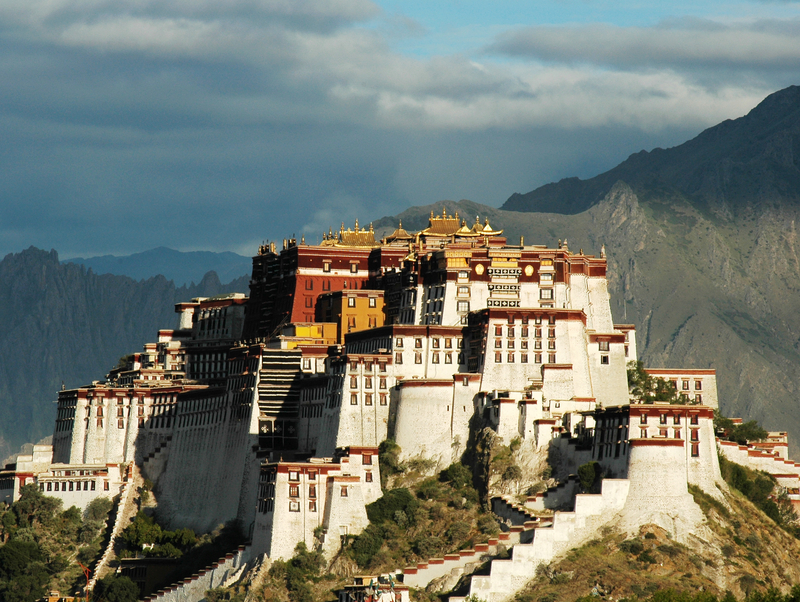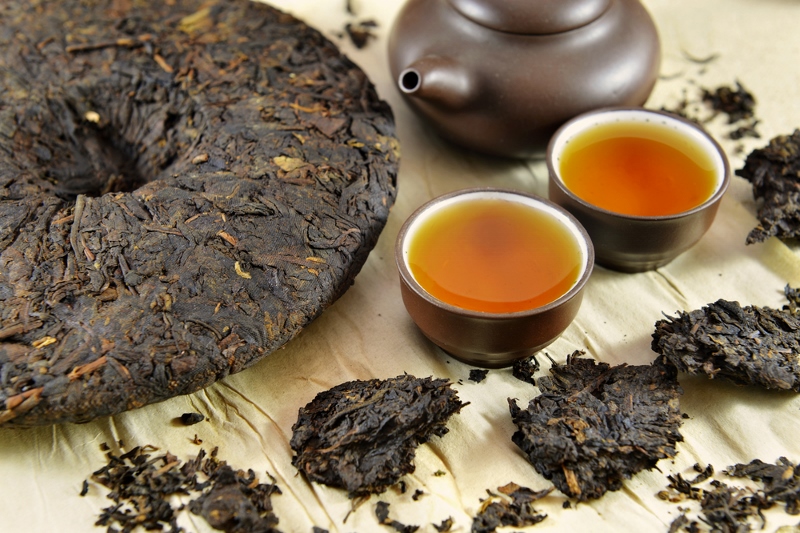 Sichuan-Tibet „Highway“, part of the ancient tea road / tea horse road to Lhasa
Sichuan-Tibet „Highway“, part of the ancient tea road / tea horse road to Lhasa
The ancient Tea Road, or Tea Horse Road, in Chinese chama gudao (chin: 茶马古道), is one of the most outstanding milestones in Asia’s, and in particular China’s trade history, with effects on the whole world trade of its time. A particularly important role, however, it played for the early distribution of tea beyond the borders of China and the Asian continent. Due to the ancient tea road’s partial overlapping – both geographically and in regard to time – with the better known “Silk Road” , the tea-hoarse road is frequently also referred to as “Southern Silk Road”.
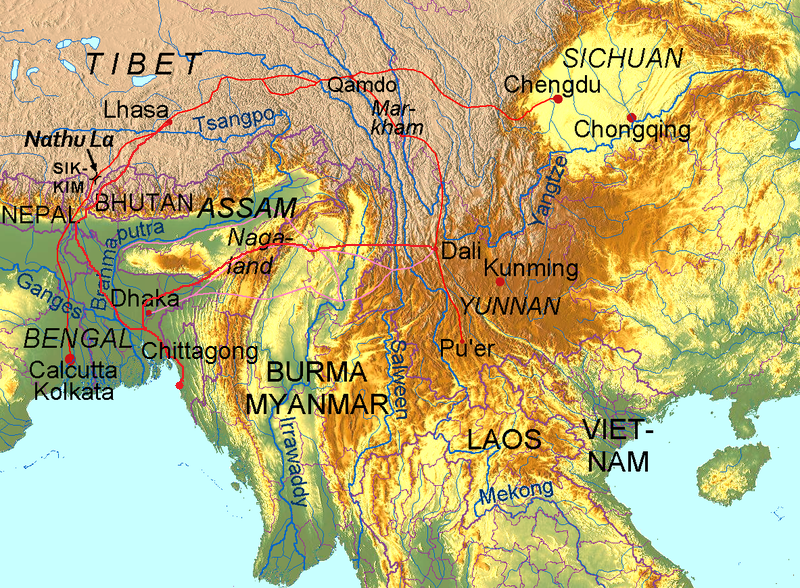 Routes and branches of the tea horse road from Yunnan and Sichuan to Lhasa in Tibet; source: Wikipedia
Routes and branches of the tea horse road from Yunnan and Sichuan to Lhasa in Tibet; source: Wikipedia
The Tea Road, less a road in the proper sense than rather a loosely defined trade route or trail, connected the southern Chinese province of Yunnan and its famous tea cultivation areas (among them Pu Erh and Xishuangbanna) via Burma (Myanmar, India and Nepal with both Bengal and Lhasa in Tibet. In addition, another branch of the route, originating in Sichuan enabled the further connection of this Chinese province in the north of Yunnan to the tea-horse trail. The lively trade on this route, and the never ending stream of caravans traveling on it coined the picture of the towns and settlements along the ancient tea road for more than a millennium.
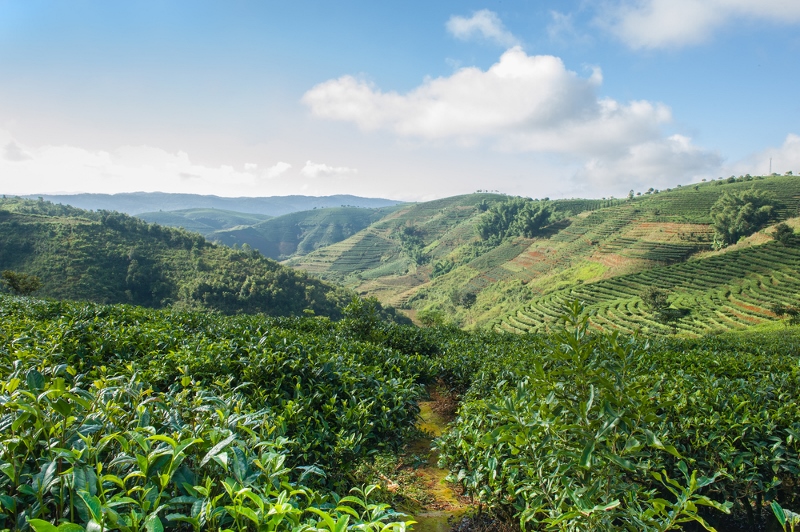 Tea plantations in Xishuangbanna, Yunnan, China
Tea plantations in Xishuangbanna, Yunnan, China
The Tea Horse Road got its name from the two goods predominantly traded on it, which were also responsible for the route’s establishment in the first place: Pu Erh Tea from Yunnan and horses from Tibet. While the latter were in high demand in China – mainly for military purposes – tea was not only much appreciated in Tibet as a hot beverage because of the harsh and cold climate there, but the Himalaya nation’s inhabitants also depended on it as a compensation of their generally fatty foods (e.g. control of cholesterol levels). As tea was introduced in India only during the later 20th century, Yunnan was the closest source of supply for the people living in Nepal and Tibet.
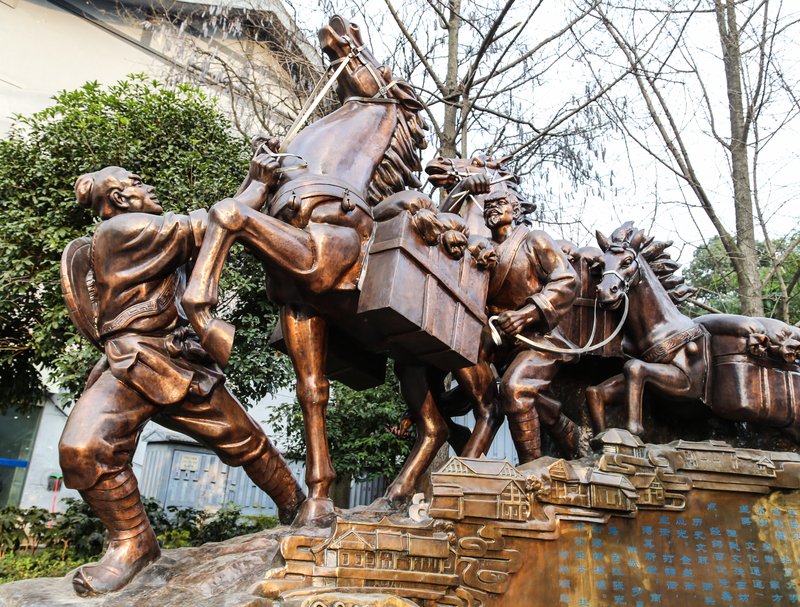 Tea Horse Road memorial statue in Chengdu, Sichuan
Tea Horse Road memorial statue in Chengdu, Sichuan
What in theory might not appear to be more than just another date in the historical development of the world economy, in practice was one of the greatest challenges of trade history. Traders and carriers on the Tea Horse Road were facing a distance of 2400 miles to cover one way, leading through some the harshest terrains and most extreme climates of the world, from the heat of the Chinese lowlands to the bone-chilling cold of the Tibetan highlands. Giant obstacles, such as crossing some of the world’s largest streams (the rivers Yangtze, Mekong and Salween) and highest mountain ranges (southern foothills of the Himalaya and parts of the same) made their trip on the ancient tea road a historically barely paralleled strain for the traders and carriers.
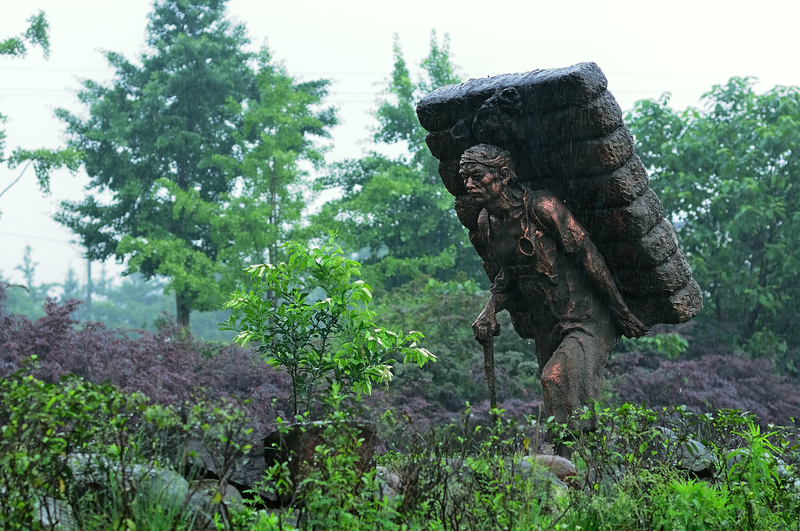 Tea Horse Road memorial sculpture in Sichuan
Tea Horse Road memorial sculpture in Sichuan
And all this afoot, as mules and horses were mainly meant as means of carriage for transporting the tea and other goods carried along, and their loading capacity – ca. 90kg of Pu Erh Tea in the form of pressed cakes or bricks that is still know today – had to be strained to the utmost, in order to make the trade profitable. As lively illustrated by the stone statues erected in Sichuan as a reminder on the Tea Horse Road, the traders did also not shy to exhaust their own human loading capacity to the limit, too, or that of their carriers, for that matter, who might have been paid merely scanty wages for this hard and enduring labor. To the physical strains and natural obstacles travelers on the ancient tea road were facing added the constant threat of bandits, attracted by the auspicious promise of rich prey.
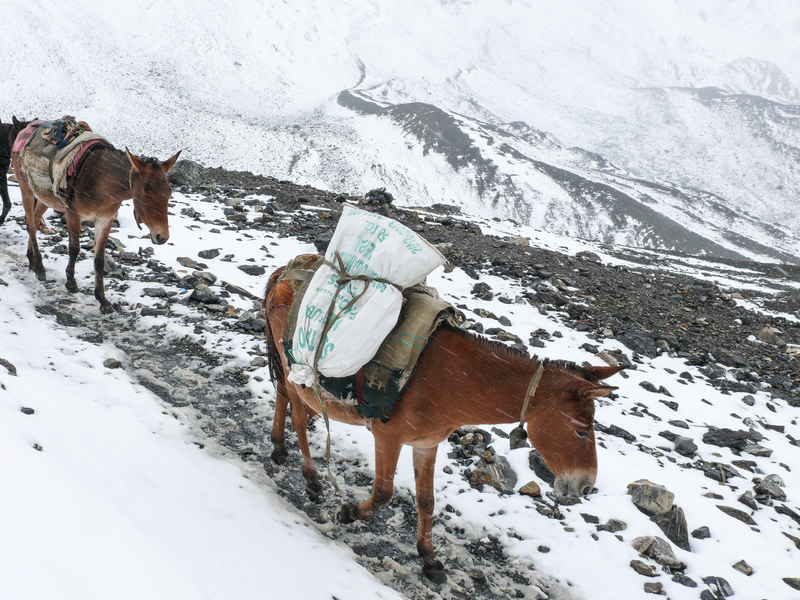 Comparably gently loaded mules on an old tea road trail in Nepal
Comparably gently loaded mules on an old tea road trail in Nepal
It is well possible that the transport requirements related to the ancient Tea Road played a crucial role in the original invention of the traditional, typically pressed form of Pu Erh teas to cakes or bricks, which is quite common until today’s time. Accordingly, the special ripening processes taking place in pressed Pu Erh Tea, with desirable effects on the tea’s taste, might only have been discovered this way. The pressed form made the tea easier stackable, and the resulting space-saving features of the pressed form allowed for transporting greater weights with the above-described limited space capacities.
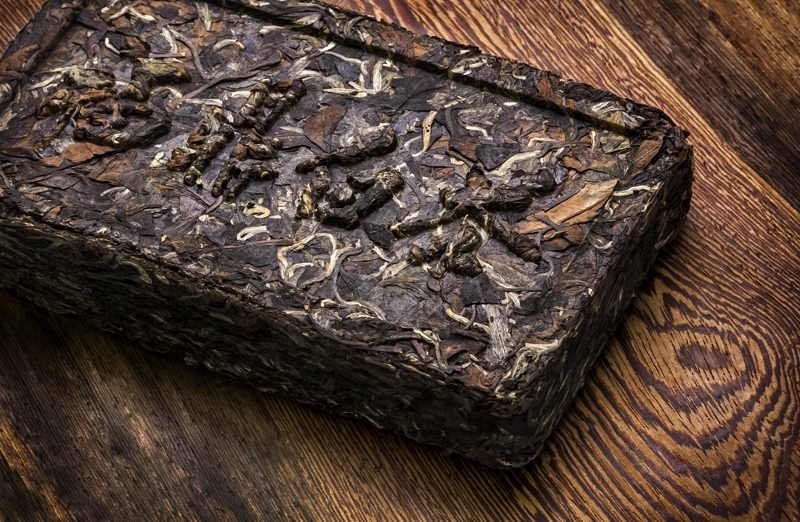 Classic Pu Erh tea brick, optimized for stacking and transport
Classic Pu Erh tea brick, optimized for stacking and transport
It took a caravan a whole year to bring tea from Yunnan’s tea cultivation centers such as Pu Erh or Xishuangbanna, or from Sichuan, to Tibet, there trade it to horses on Lhasa’s infamous horse market, and make it back with these all the way to their families. Because of a lack of alternative sources of income, often enough a new departure followed already soon after the homecoming.
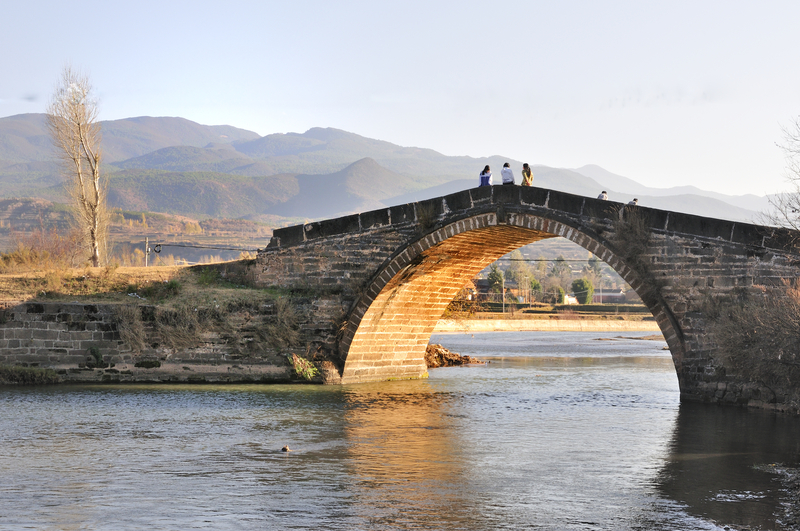 Old bridge at the tea horse road between Dali and Lijang zogen einst zahllose Karawanen
Old bridge at the tea horse road between Dali and Lijang zogen einst zahllose Karawanen
The ancient tea road, with all of its involved ethnicities, languages, traditions and religions, has certainly left its stamp on every person who has ever made their living on it or traveled on it in order to find their fortune. And not all of them reached their destination. Many of the traders and carriers on the ancient tea road eventually settled along the trail to start a trade related to the activities on the route. Examples for this might be services catering to people and horses, such as providing food and/or accommodation or blacksmith or saddler services. The hostels along the Tea Horse Road, so-called caravanserais, were melting points of the most diverse ethnicities, cultures and trades, and the resulting multi-ethnic populations are still characterizing the areas along the trail today.
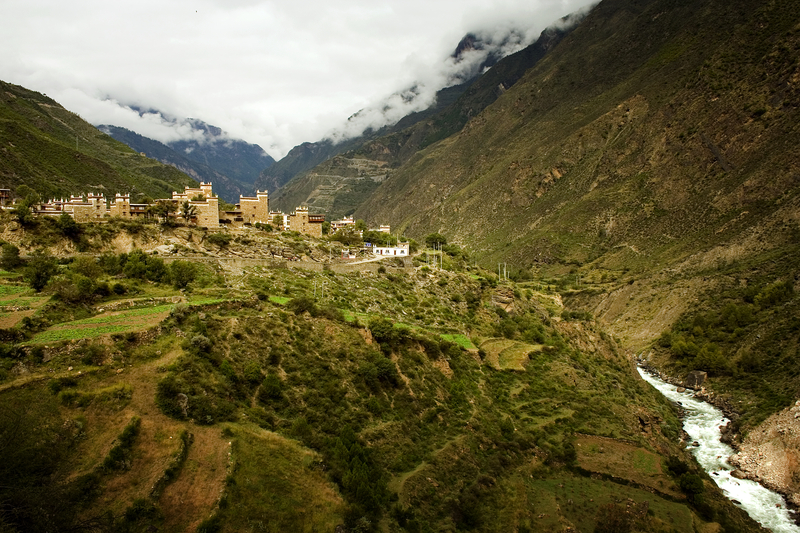 Tibetan village at the ancient tea horse road in Sichuan
Tibetan village at the ancient tea horse road in Sichuan
Only in the 1950s, with the invention of modern means of transportation such as trains and trucks, the accompanying improvement of road and rail networks, and ultimately air traffic, the caravans started to become fewer and fewer, and the Tea Horse Road finally lost its key role for the trade inside Asia as well as for the worldwide trade. Though individual segments of the trail are still used for regional trade purposes today, there are no caravans traveling from Yunnan or Sichuan to Tibet now anymore, and the caravanserais have disappeared or converted to hotels, restaurants, museums or tourist attractions of any kind.
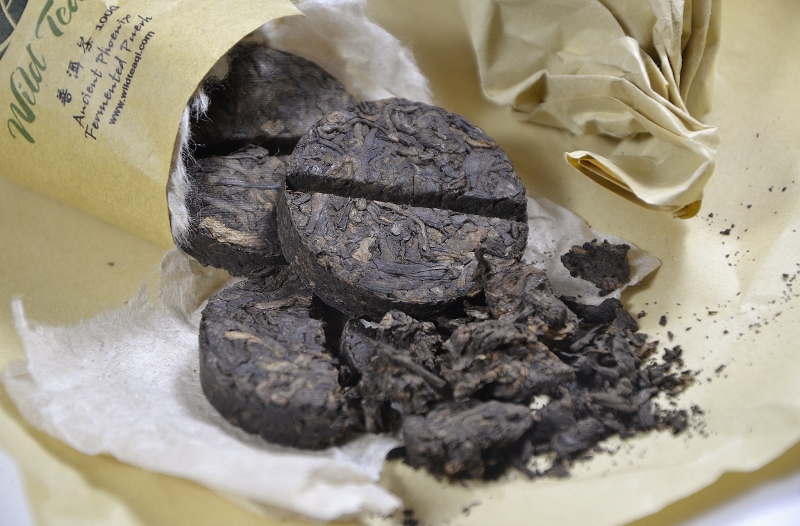 Ancient Phoenix Competition Grade Shu Pu Erh Tea at Siam Tea Shop – Pu Erh Tea in disk shape
Ancient Phoenix Competition Grade Shu Pu Erh Tea at Siam Tea Shop – Pu Erh Tea in disk shape
Looking at modern means of transportation, with mail and carrier services reaching about any possible point on earth, we can hardly imagine today that the heyday of the ancient Tea Horse Road was still going on even significantly less than a hundred years ago. In fact, journalists, hobby videographers and adventure travelers on the tracks of the ancient trade route keep “digging out” contemporary witnesses, who are now in their 80s or 90s and who have once made their living on the ancient tea road. They tell us the stories from the old times, and to them we owe it that the best ones of them have been kept alive, if only in our memory.
The trade on the Tea Horse Road might have disappeared, but Pu Erh tea, which once made this trail come into existence because of the great appreciation for this tea on far away shores, is still available today, and even today it is picked, processed and pressed just like at the times of the Tea Horse Road by many people in Yunnan. SiamTeas has selected some of the finest original Pu Ehr’s for you and has made them available through Siam Tea Shop. Get the taste of the millenniums right into your teapot!
Ancient Phoenix Competition Grade Ripe Puer Tea – Discs
Wild Purple Buds Sheng Puerh Tea


